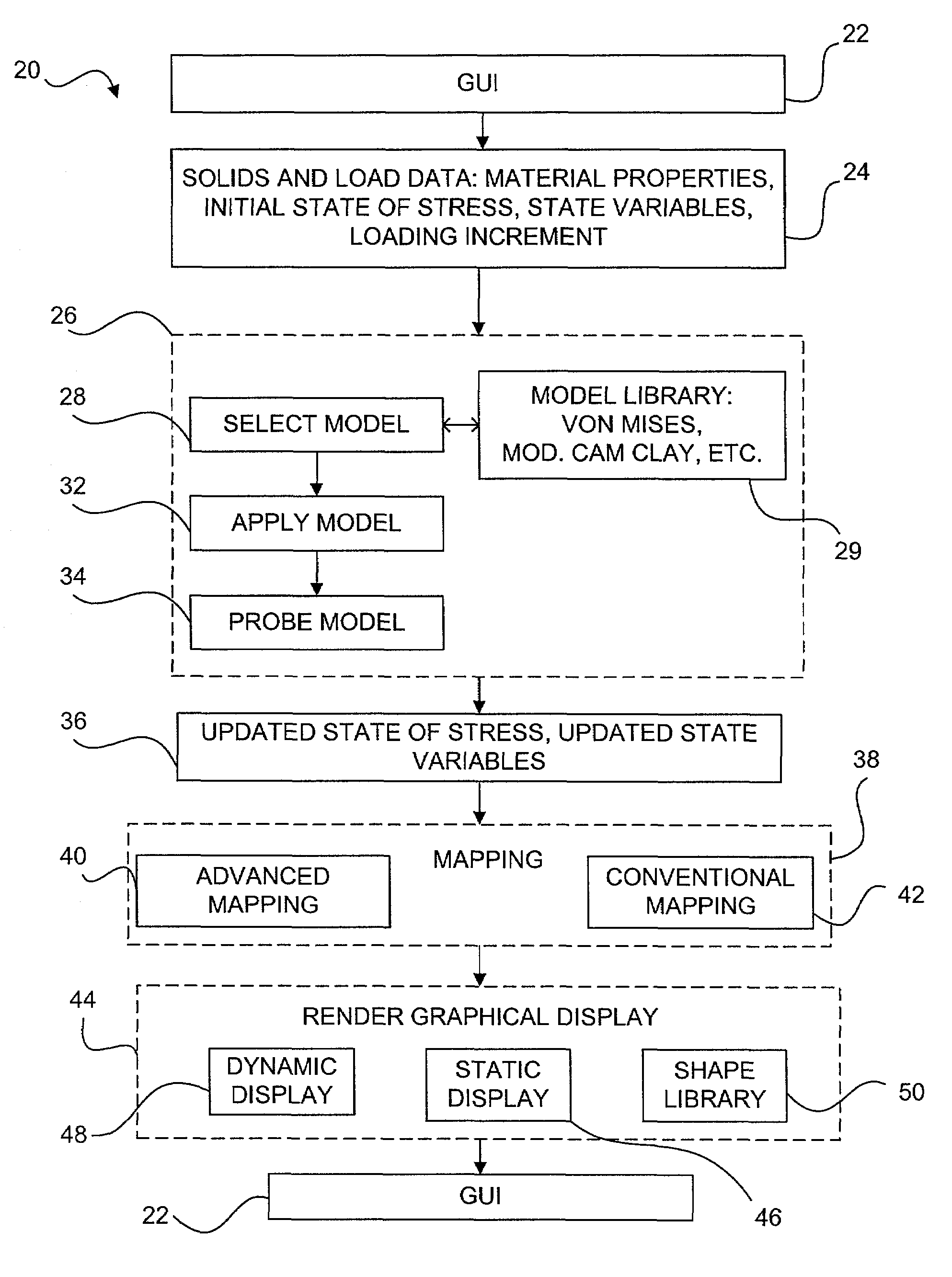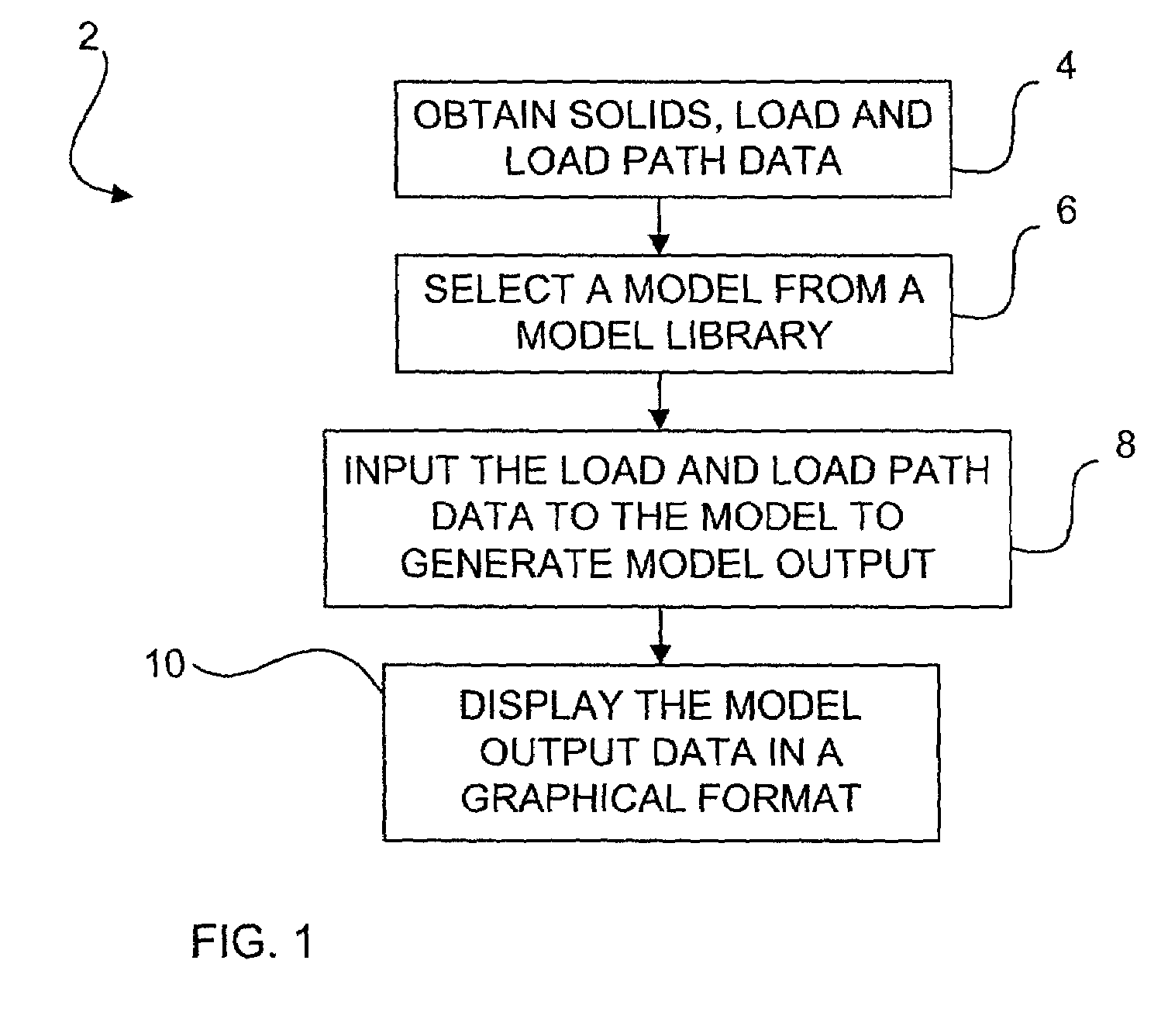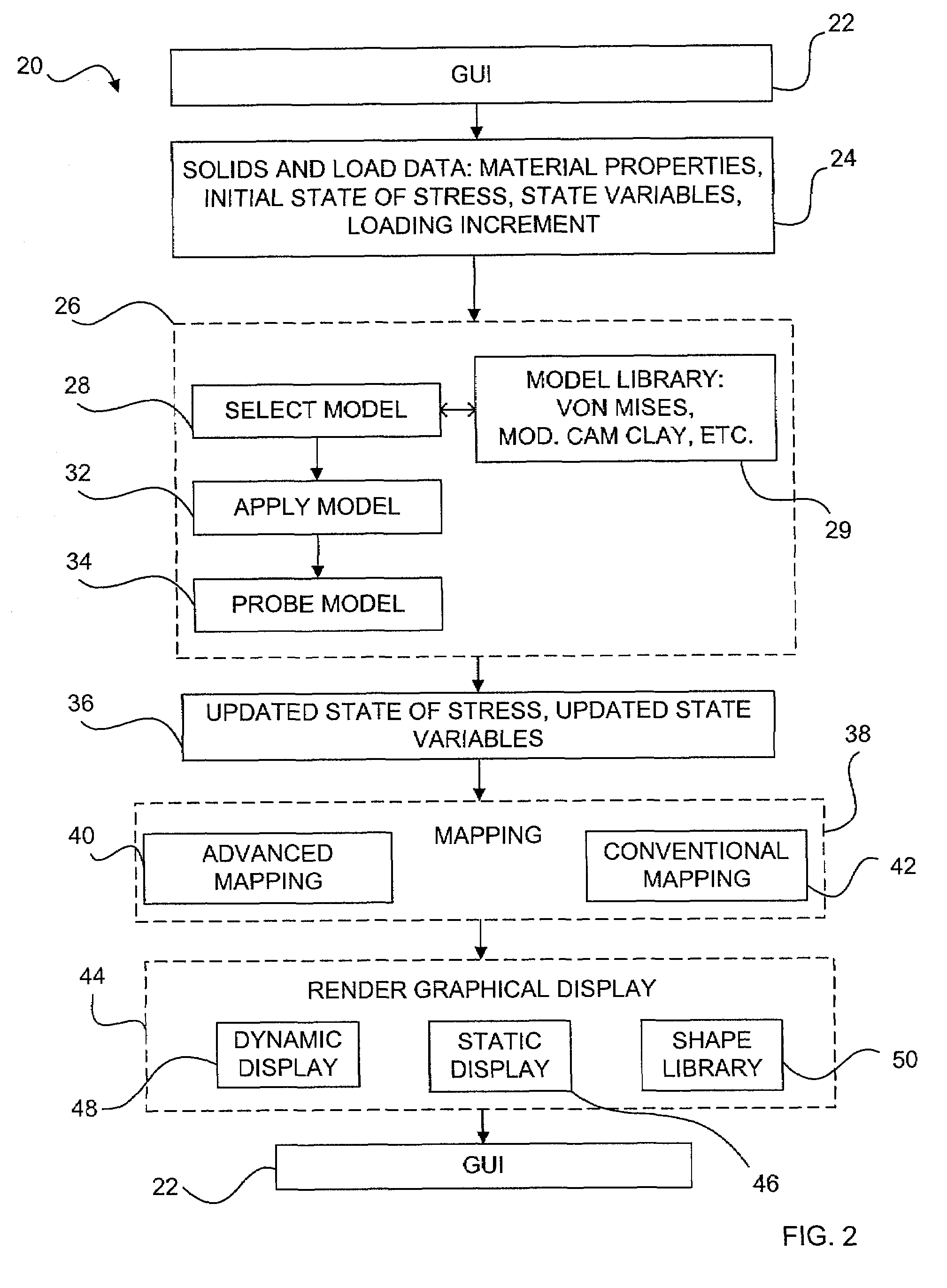Method and program product for solid mechanics modelling workbench and dynamic display
a solid mechanics and workbench technology, applied in the field of solid mechanics, can solve problems such as anisotropy, strain rate dependence, hardening and softening, and inadequacies for fully addressing complex behavior, and achieve the effect of avoiding the problem of repeated modeling of the system using different models and avoiding the problem of laborious task
- Summary
- Abstract
- Description
- Claims
- Application Information
AI Technical Summary
Benefits of technology
Problems solved by technology
Method used
Image
Examples
Embodiment Construction
[0020]Before discussing invention embodiments in detail, it will be appreciated by those knowledgeable in the art that the present invention lends itself well to practice in the form of a computer program product as well as a method. Accordingly, it will be appreciated that embodiments of the present invention comprise computer program products comprising computer executable instructions stored in a computer readable medium that when executed cause the computer to perform certain steps. The steps performed may comprise steps of a method embodiment of the invention. It will be further appreciated, therefore, that discussion herein of the steps of an invention method embodiment may be applicable to an invention program product embodiment, and that description of a program product embodiment may be applicable to a method embodiment.
[0021]FIG. 1 illustrates an example embodiment 2 of a method and program product of the invention. Data describing the solids system to be modeled, load dat...
PUM
 Login to View More
Login to View More Abstract
Description
Claims
Application Information
 Login to View More
Login to View More - R&D
- Intellectual Property
- Life Sciences
- Materials
- Tech Scout
- Unparalleled Data Quality
- Higher Quality Content
- 60% Fewer Hallucinations
Browse by: Latest US Patents, China's latest patents, Technical Efficacy Thesaurus, Application Domain, Technology Topic, Popular Technical Reports.
© 2025 PatSnap. All rights reserved.Legal|Privacy policy|Modern Slavery Act Transparency Statement|Sitemap|About US| Contact US: help@patsnap.com



